This post contains affiliate links. This means I will make a commission at no extra cost to you should you click through and make a purchase [ “As an Amazon Associate, I earn from qualifying purchases.” ]. Read the full disclosure here.
VW Dashboard Lights Meaning GuideMechanic.Com As a Volkswagen owner, it’s important to understand the meaning behind the various dashboard lights that may illuminate while you’re driving.
These lights serve as warning indicators, providing you with crucial information about your vehicle’s status and potential issues.
However, deciphering the symbols and knowing what actions to take can be a daunting task. In this blog article, we aim to provide you with a comprehensive guide to understanding the meaning of VW dashboard lights.
Whether you’re a new Volkswagen owner or simply seeking to refresh your knowledge, this article will offer detailed explanations of the most common dashboard lights, ensuring that you can respond appropriately and promptly in case of an emergency.
VW Dashboard Lights Meaning: Engine Warning Light
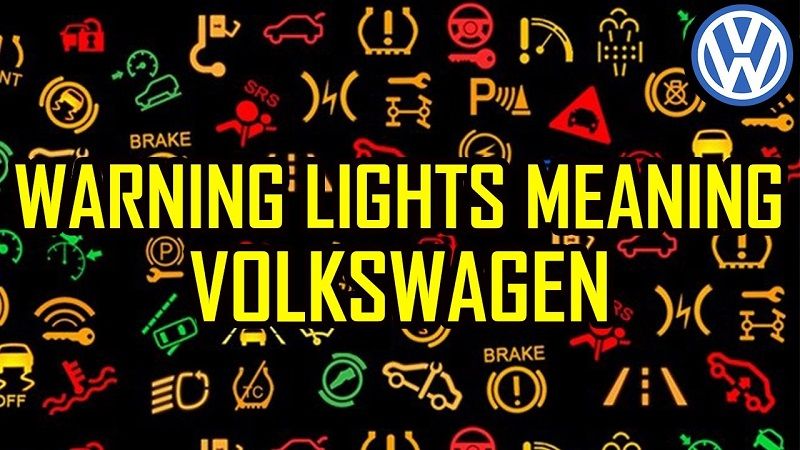
The engine warning light, often depicted as a check engine symbol, is one of the most important dashboard lights to be aware of.
When this light illuminates, it signifies that your vehicle’s engine management system has detected a potential issue.
There are various reasons why this light may come on, ranging from a loose gas cap to more serious engine problems. It is important not to ignore this warning light, as doing so could lead to further damage and costly repairs.
Possible Causes
There are several potential causes for the engine warning light to illuminate. One common reason is a loose gas cap, which can result in a decrease in fuel efficiency and potential fuel system issues.
Other possible causes include a malfunctioning oxygen sensor, a faulty catalytic converter, a misfiring engine, or a problem with the ignition system.
Additionally, issues with the engine’s emission control system or the mass airflow sensor can also trigger this warning light.
Actions to Take
If the engine warning light comes on, it is recommended to take the following steps:
- Check the gas cap: Start by ensuring that the gas cap is securely tightened. If it was loose, tighten it and observe if the light goes off after a few driving cycles.
- Check for obvious issues: Inspect the engine for any obvious signs of damage or leaks. If you notice anything unusual, such as smoke or strange noises, it is advisable to have your vehicle inspected by a certified technician.
- Check other warning lights: Take note if any other warning lights are illuminated. Multiple warning lights coming on simultaneously may indicate a more serious problem and require immediate attention.
- Check the owner’s manual: Consult your vehicle’s owner manual for specific instructions and recommendations regarding the engine warning light. It may provide additional troubleshooting steps or indicate when it is necessary to seek professional assistance.
- Seek professional help: If the engine warning light persists or if you are unsure about the cause, it is best to have your vehicle inspected by a qualified mechanic. They will have the necessary tools and expertise to diagnose and resolve the issue.
VW Dashboard Lights Meaning: Oil Pressure Warning Light
Check out this OBDeleven OBD2 Diagnostic Tool Scanner for Audi Seat Cupra Skoda Volkswagen BMW Mini (Android & iOS, Next Gen Device)
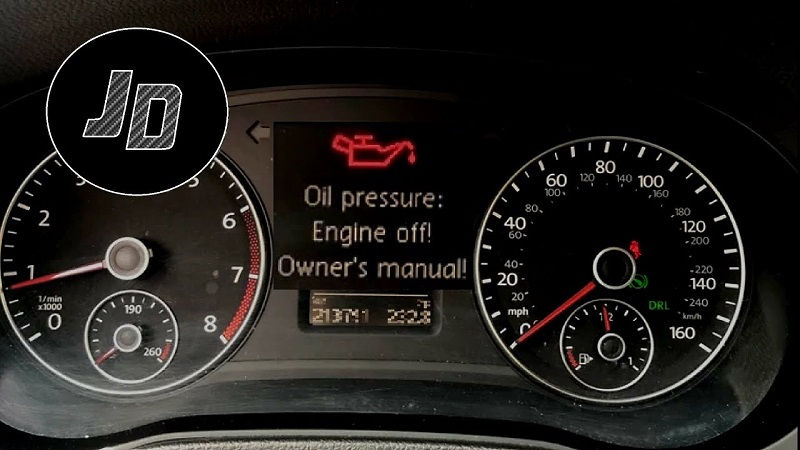
When the oil pressure warning light comes on, it indicates a potential problem with your vehicle’s oil pressure system.
The oil pressure system plays a critical role in lubricating the engine and preventing damage due to friction and heat. Ignoring this warning light could lead to severe engine damage and even engine failure.
Possible Causes
There are several possible causes for the oil pressure warning light to illuminate. It may indicate a low oil level, which could be due to a leak or inadequate oil maintenance.
A malfunctioning oil pump, a clogged oil filter, or a faulty oil pressure sensor can also trigger this warning light. In some cases, it may be caused by engine wear or a problem with the oil pressure relief valve.
Actions to Take
If the oil pressure warning light comes on, it is crucial to take immediate action to prevent engine damage:
- Check the oil level: Park your vehicle on a level surface and wait for the engine to cool down. Locate the dipstick, remove it, and wipe it clean. Reinsert the dipstick fully and then remove it again to check the oil level. If it is below the recommended level, add the appropriate type and amount of oil as specified in your owner’s manual.
- Check for oil leaks: Inspect the engine and the area beneath the vehicle for any signs of oil leaks. Look for oil spots or puddles, as well as any visible damage to hoses or gaskets. If you notice a leak, it is advisable to have it repaired by a professional.
- Check the oil filter: A clogged or dirty oil filter can result in restricted oil flow and decreased oil pressure. If you suspect a clogged oil filter, it is recommended to have it replaced.
- Seek professional help: If the oil level is correct, there are no visible leaks, and the oil filter is not clogged, it is best to have your vehicle inspected by a qualified mechanic. They will have the necessary equipment to measure the actual oil pressure and diagnose any underlying issues.
VW Dashboard Lights Meaning: Battery Warning Light
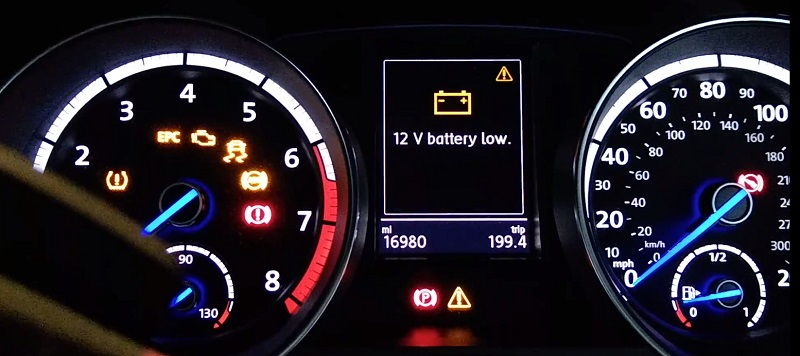
The battery warning light typically signifies an issue with your vehicle’s charging system. The charging system comprises the battery, alternator, and voltage regulator, all of which work together to provide power to the electrical components of your vehicle. Ignoring this warning light could lead to a dead battery and potentially leave you stranded.
Possible Causes
There are several potential causes for the battery warning light to illuminate. It may indicate a weak or failing battery, which could be due to age, a faulty charging system, or excessive electrical loads.
A malfunctioning alternator, a loose or damaged belt, or a faulty voltage regulator can also trigger this warning light.
Actions to Take
If the battery warning light comes on, it is important to take the following steps:
- Check the battery connections: Start by inspecting the battery terminals and cables for any signs of corrosion, looseness, or damage. Clean the terminals if necessary and ensure they are securely tightened.
- Check the belt: A loose or damaged belt can prevent the alternator from charging the battery properly. Inspect the belt for any signs of wear, cracks, or looseness. If you notice any issues, it is advisable to have it replaced.
- Check the alternator output: If you have access to a voltmeter, you can measure the voltage output of the alternator. Start the engine and connect the voltmeter to the battery terminals. A healthy alternator should produce a voltage reading between 13.5 and 14.5 volts. If the reading is significantly lower, it may indicate a problem with the alternator.
- Reduce electrical loads: Turn off any unnecessary electrical accessories, such as lights, heated seats, or the air conditioning, to reduce the strain on the battery and charging system.
- Seek professional help: If the battery warning light persists or if you are unsure about the cause, it is best to have your vehicle inspected by a qualified mechanic. They will have the necessary equipment to test the charging system and diagnose any underlying issues.
VW Dashboard Lights Meaning: ABS Warning Light
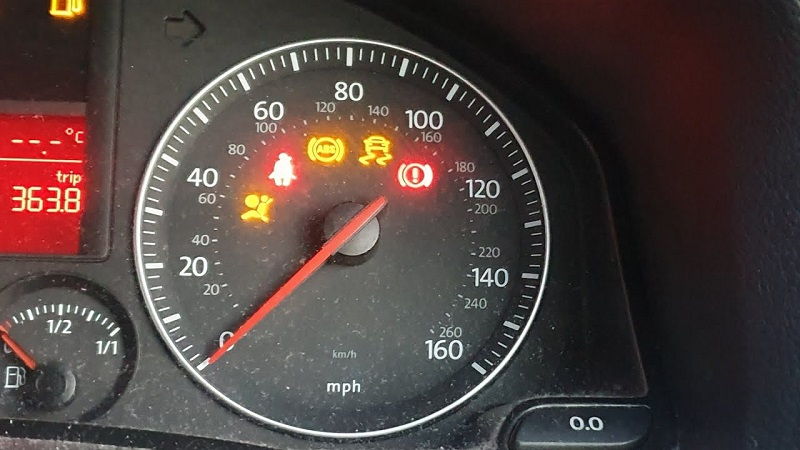
The Anti-lock Braking System (ABS) warning light is crucial for your safety on the road. The ABS system helps prevent the wheels from locking up during braking, allowing you to maintain control of your vehicle.
Understanding the meaning behind this warning light and taking appropriate action is essential to ensure the proper functioning of your braking system.
Possible Causes
There are several potential causes for the ABS warning light to illuminate. It may indicate a malfunctioning ABS sensor, which measures the rotational speed of each wheel.
A faulty ABS module, a damaged ABS ring, or a problem with the hydraulic control unit can also trigger this warning light.
Additionally, issues with the brake fluid level or a faulty brake light switch can result in ABS system malfunction.
Actions to Take
If the ABS warning light comes on, it is recommended to take the following steps:
- Check the brake fluid level: A low brake fluid level can lead to ABS system malfunction. Locate the brake fluid reservoir under the hood and check if the level is between the minimum and maximum marks. If it is below the minimum mark, add the appropriate type of brake fluid as specified in your owner’s manual.
- Check the brake light switch: The brake light switch plays a role in the operation of the ABS system. Ensure that the brake lights are functioning properly when the brake pedal is pressed. If the brake lights do not illuminate, the switch may need to be replaced.
- Check for visible damage: Inspect the ABS sensors, located near each wheel, for any signs of damage or corrosion. Clean the sensors if necessary and ensure they are securely mounted.
- Seek professional help: If the ABS warning light persists or if you are unsure about the cause, it is best to have your vehicle inspected by a qualified mechanic. They will have the necessary diagnostic tools to identify and resolve any issues with the ABS system.
VW Dashboard Lights Meaning: Tire Pressure Monitoring System (TPMS) Warning Light
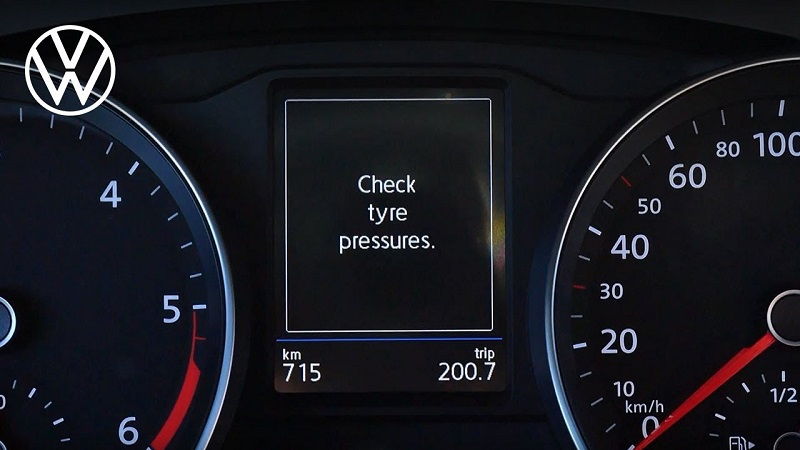
The TPMS warning light alerts you when there is an issue with your tire pressure. Proper tire pressure is crucial for safe driving, as underinflated or overinflated tires can affect traction, handling, and fuelefficiency.
Understanding the meaning behind this warning light and knowing how to address any tire-related issues effectively is essential for maintaining optimal performance and safety on the road.
Possible Causes
There are several potential causes for the TPMS warning light to come on. It may indicate a tire with low pressure, which could be due to a slow leak, temperature changes, or improper inflation.
Additionally, a faulty TPMS sensor, a malfunctioning TPMS module, or a problem with the tire valve stem can also trigger this warning light.
Actions to Take
If the TPMS warning light illuminates, follow these steps to address the issue:
- Check tire pressure: Start by inspecting the tire pressure of all four tires, including the spare if applicable. Use a tire pressure gauge to measure the pressure and compare it to the recommended pressure specified in your vehicle’s manual or on a sticker located on the driver’s side door jamb or inside the fuel filler flap. If any tire has low pressure, add air to bring it to the recommended level.
- Inspect tires for damage: While checking the tire pressure, visually inspect the tires for any signs of damage, such as cuts, bulges, or punctures. If you notice any significant damage, it is advisable to have the tire inspected or replaced by a professional.
- Reset the TPMS system: Some vehicles require a manual reset of the TPMS system after adjusting tire pressure. Consult your vehicle’s manual for specific instructions on how to reset the TPMS system.
- Monitor tire pressure: After adjusting tire pressure and resetting the TPMS system if necessary, monitor the tire pressure regularly. Fluctuations in temperature can affect tire pressure, so it’s important to check and adjust as needed.
- Seek professional help: If the TPMS warning light persists or if you are unsure about the cause, it is best to have your vehicle inspected by a qualified mechanic. They will have the necessary equipment to diagnose and resolve any issues with the TPMS system or tire pressure.
VW Dashboard Lights Meaning: Airbag Warning Light
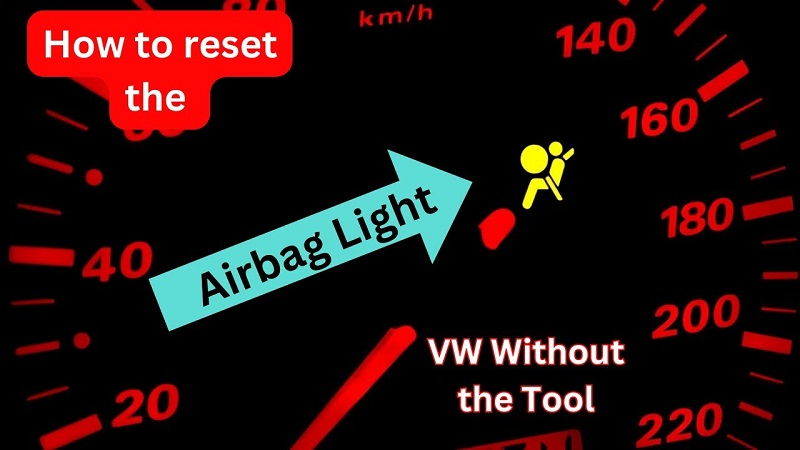
When the airbag warning light appears, it indicates a potential problem with your vehicle’s airbag system.
The airbags are a critical safety feature, designed to protect occupants in the event of a collision. Understanding the meaning behind this warning light and taking appropriate action is crucial for ensuring your safety on the road.
Possible Causes
There are several potential causes for the airbag warning light to illuminate. It may indicate a faulty airbag sensor, a problem with the airbag control module, or a malfunction in the wiring or connectors of the airbag system.
Additionally, if the airbags have been deployed and not properly replaced or reset, it can also trigger this warning light.
Actions to Take
If the airbag warning light comes on, it is important to take the following steps:
- Check the seat belts: Ensure that the seat belts are properly fastened and that the belt buckle is securely latched. Sometimes, an improperly latched seat belt can trigger the airbag warning light.
- Inspect the wiring and connectors: Visually inspect the wiring and connectors of the airbag system for any signs of damage, corrosion, or loose connections. If you notice any issues, it is advisable to have your vehicle inspected by a professional.
- Consult the owner’s manual: Refer to your vehicle’s owner’s manual for specific instructions on how to address the airbag warning light. It may provide additional troubleshooting steps or indicate when it is necessary to seek professional assistance.
- Seek professional help: If the airbag warning light persists or if you are unsure about the cause, it is best to have your vehicle inspected by a qualified mechanic. They will have the necessary diagnostic tools to identify and resolve any issues with the airbag system.
VW Dashboard Lights Meaning: Coolant Warning Light
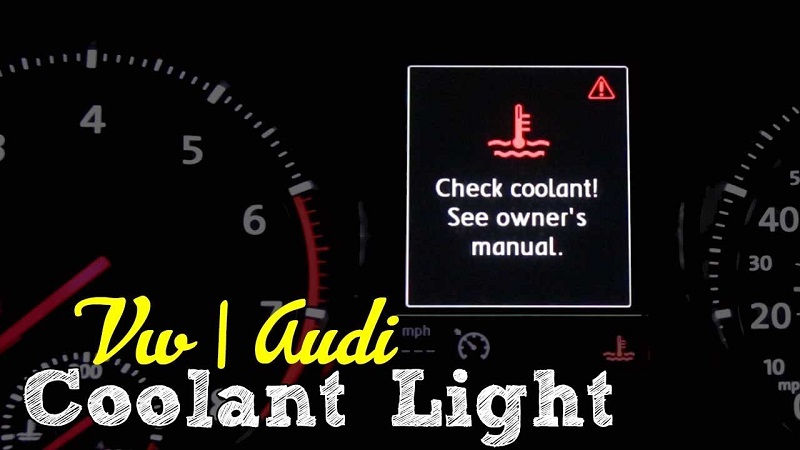
The coolant warning light notifies you about the temperature of your engine coolant. The engine coolant plays a vital role in preventing your engine from overheating.
Understanding the meaning behind this warning light and taking appropriate action is crucial to prevent engine damage and maintain optimal performance.
Possible Causes
There are several potential causes for the coolant warning light to come on. It may indicate a low coolant level, which could be due to a leak in the cooling system or improper maintenance.
A malfunctioning coolant temperature sensor, a faulty thermostat, or a problem with the water pump can also trigger this warning light.
Actions to Take
If the coolant warning light illuminates, follow these steps to address the issue:
- Check the coolant level: Park your vehicle on a level surface and wait for the engine to cool down. Locate the coolant reservoir under the hood and check if the level is between the minimum and maximum marks. If it is below the minimum mark, add the appropriate type and amount of coolant as specified in your owner’s manual.
- Inspect for coolant leaks: Inspect the engine and the area beneath the vehicle for any signs of coolant leaks. Look for coolant spots or puddles, as well as any visible damage to hoses, radiator, or water pump. If you notice a leak, it is advisable to have it repaired by a professional.
- Check the thermostat: A faulty thermostat can cause the engine to overheat or prevent it from reaching the optimal operating temperature. If you suspect a faulty thermostat, it is recommended to have it replaced.
- Seek professional help: If the coolant warning light persists or if you are unsure about the cause, it is best to have your vehicle inspected by a qualified mechanic. They will have the necessary equipment to diagnose and resolve any issues with the cooling system.
VW Dashboard Lights Meaning: Brake System Warning Light
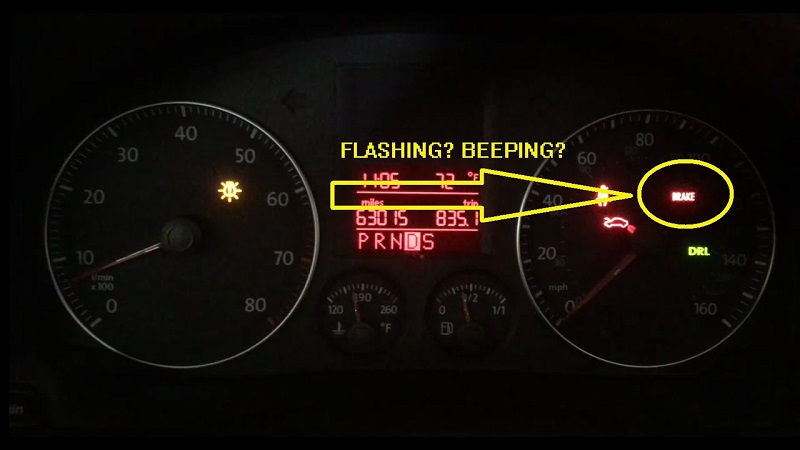
The brake system warning light should never be ignored. It indicates a potential problem with your vehicle’s braking system, which is crucial for your safety on the road.
Understanding the meaning behind this warning light and taking appropriate action is essential to ensure your brakes function properly.
Possible Causes
There are several potential causes for the brake system warning light to illuminate. It may indicate a low brake fluid level, which could be due to a leak or excessive wear of the brake pads.
A malfunctioning brake master cylinder, a faulty brake booster, or a problem with the ABS system can also trigger this warning light.
Actions to Take
If the brake system warning light comes on, it is crucial to take immediate action to ensure your safety:
- Check the brake fluid level: Locate the brake fluid reservoir under the hood and check if the level is between the minimum and maximum marks. If it is below the minimum mark, add the appropriate type of brake fluid as specified in your owner’s manual.
- Inspect the brake pads: Visually inspect the brake pads through the wheel spokes for any signs of wear. If the brake pads appear thin or worn, it is recommended to have them replaced by a professional.
- Check for visible leaks: Inspect the brake lines, calipers, and wheel cylinders for any signs of brake fluid leaks. If you notice a leak or any visible damage, it is advisable to have it repaired by a professional.
- Seek professional help: If the brake system warning light persists or if you are unsure about the cause, it is best to have your vehicle inspected by a qualified mechanic. They will have the necessary diagnostic tools to identify and resolve any issues with the braking system.
VW Dashboard Lights Meaning: Power Steering Warning Light
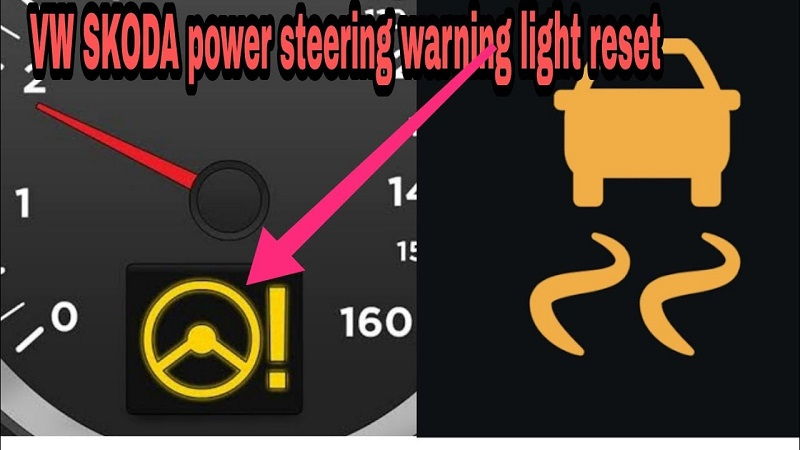
If the power steering warning light comes on, it indicates a problem with your vehicle’s power steering system. The power steering system assists in steering your vehicle, allowing for easier maneuverability.
Understanding the meaning behind this warning light and taking appropriate action is crucial for maintaining control and safety while driving.
Possible Causes
There are several potential causes for the power steering warning light to illuminate. It may indicate a low power steering fluid level, which could be due to a leak or improper maintenance.
A malfunctioning power steering pump, a faulty power steering belt, or a problem with the power steering rack can also trigger this warning light.
Actions to Take
If the power steering warning light comes on, follow these steps to address the issue:
- Check the power steering fluid level: Locate the power steering fluid reservoir under the hood and check if the level is between the minimum and maximum marks. If it is below the minimum mark, add the appropriate type of power steering fluid as specified in your owner’s manual.
- Inspect for visible leaks: Inspect the power steering system, including hoses and connections, for any signs of fluid leaks. If you notice a leak or any visible damage, it is advisable to have it repaired by a professional.
- Check the power steering belt: A loose or damaged power steering belt can affect the performance of the power steering system. Inspect the belt for any signs of wear, cracks, or looseness. If you notice any issues, it is recommended to have it replaced.
- Seek professional help: If the power steering warning light persists or if you are unsure about the cause, it is best to have your vehicleinspected by a qualified mechanic. They will have the necessary equipment to diagnose and resolve any issues with the power steering system.
VW Dashboard Lights Meaning: Fuel Level Warning Light
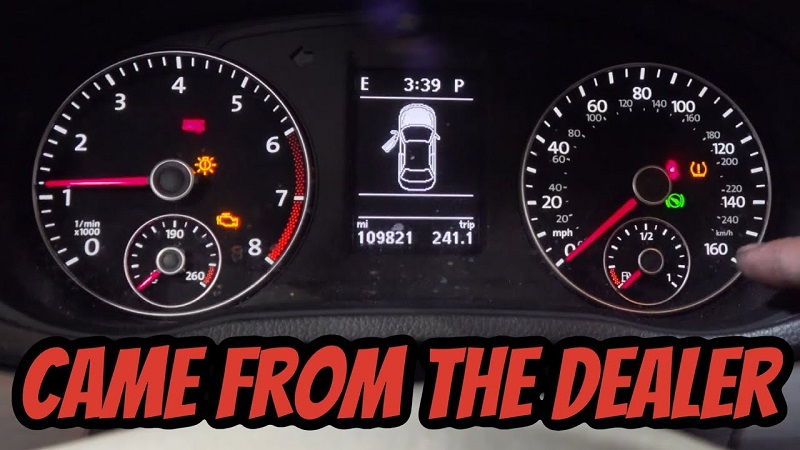
The fuel level warning light alerts you when your vehicle is running low on fuel. Ignoring this warning light could leave you stranded on the road, so it’s important to understand its meaning and manage your fuel level effectively.
Possible Causes
The fuel level warning light is straightforward and typically indicates that your vehicle’s fuel level is low. It serves as a reminder to refuel your vehicle to avoid running out of gas.
However, in some cases, a malfunctioning fuel level sensor or a problem with the fuel gauge can trigger this warning light even when the fuel level is not actually low.
Actions to Take
If the fuel level warning light comes on, follow these steps to address the situation:
- Find a nearby gas station: When the fuel level warning light illuminates, it’s important to find a gas station as soon as possible. Use a navigation system or ask for directions to the nearest station.
- Manage your driving: Until you reach a gas station, it’s advisable to drive conservatively to minimize fuel consumption. Avoid excessive acceleration or high speeds, as these can deplete your fuel faster.
- Refuel your vehicle: Once you arrive at a gas station, park near a pump and refuel your vehicle. Take note of the type of fuel required for your vehicle (e.g., regular unleaded, premium) and select the appropriate fuel grade.
- Reset the warning light: After refueling, the fuel level warning light should turn off. If it remains illuminated, consult your vehicle’s manual for instructions on how to reset the warning light.
It’s important to note that consistently running your vehicle with a low fuel level can lead to damage to the fuel system. It’s best to maintain a sufficient fuel level to ensure optimal performance and avoid potential issues.
In conclusion, understanding the meaning of the dashboard lights in your Volkswagen is essential for maintaining your vehicle’s performance, safety, and longevity.
By familiarizing yourself with the various warning indicators and knowing the appropriate actions to take, you can address potential issues promptly and ensure a smooth driving experience.
Remember to consult your vehicle’s manual for specific information and always seek professional assistance if needed.
Related video of VW Dashboard Lights Meaning: A Comprehensive Guide to Understanding Your Volkswagen’s Dashboard Lights
- Seafoam Catalytic Converter Cleaner: It Work & How to Use It? - April 18, 2025
- Rislone Catalytic Converter Cleaner: What It Is, How It Works - April 18, 2025
- Wynn’s Catalytic Converter Cleaner 325ml - April 17, 2025
